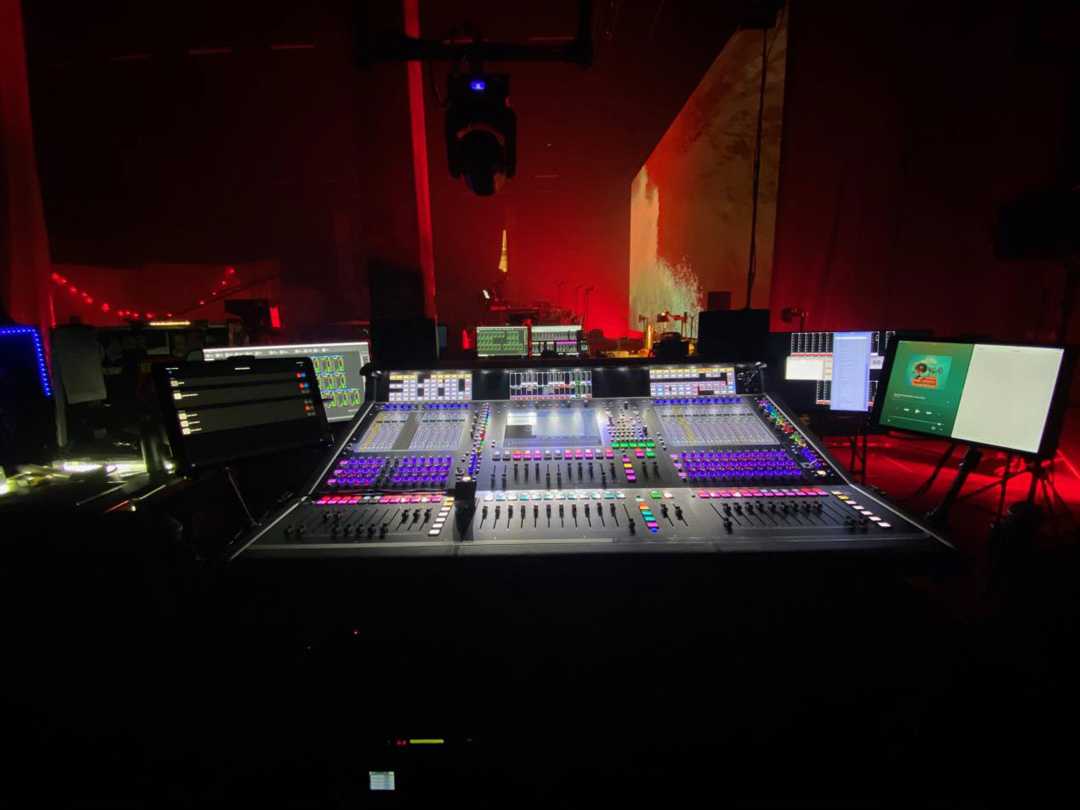DiGiCo delivers Quantum power for Gorillaz
- Details

The format was fitting for the biggest virtual band on the planet, Song Machine Live From Kong saw Gorillaz deliver a full scale production blending real-time performance with Jamie Hewlett’s animation. Audio was delivered by the band’s long-time engineers Dave Guerin, at his usual monitor position, and front of house man Matt Butcher on the live steam mix, both using DiGiCo Quantum 7s provided by Entec Sound & Light.
The 14-piece Gorillaz live band saw Damon Albarn joined in the room by virtual bandmates guitarist Noodle, bassist Murdoc Niccals, drummer Russel Hobbs and frontman 2D, plus a line-up of Song Machine collaborators including Leee John, Georgia, Peter Hook, Kano, Slowthai, Slaves, Robert Smith, Matt Berry and Sweetie Irie, while the likes of Beck, Fatoumata Diawara, Elton John, Jpegmafia, Schoolboy Q and 6lack joined via a mix of blended animation and augmented reality effects.
"We used two Quantum 7s, one FOH and one for monitors," says Dan Scantlebury, head of sound for Entec. "There’s also an SD11i in the loop for playback, three SD Racks and an SD MiNi Rack located at FOH on a separate optical loop."
Entec senior sound technician Peter Eltringham adds: "Now we have the Quantum console's additional processing, we have the power to run the monitoring systems at a 96kHz sample rate, delivering lower latency and improved sound quality. Dave Guerin has made an iPad app to enable some of the band members to do their own sub-mixes from his console."
"The drummer and percussionists like to adjust their timing all the time, it's the important timing bit for them – so you give them that control and they can then also mix a bit of the kit louder, or whatever else they want," explains Guerin. "My iPad app sends OSC (Open Sound Control) commands to the Quantum 7, the app has a set of faders which control auxiliaries or matrices on the desk; each musician has one of these. As the Quantum 7 only allows for one controlling device per protocol, I also wrote a router iPad app to pass all the data packets backwards and forwards."
A big evolution for the Gorillaz sound was the simultaneous recording of 128 channels at 96kHz, plus a further 48 channels from a 'C stage'. A second optical loop was fitted to the FOH console, to deliver sufficient channels, with the primary loop consisting of a massive 490 channels. The recording was used to facilitate extended sound checks, and to provide the option of a post-event multitrack mix if required.
"The recording system is also a useful tool if we heard something unusual during a performance," Butcher observes. "We'd note what track it was in, and if we didn't find it on the spot, then we could go back the next day and go through forensically, find the problem, and isolate it."
With limited rehearsal time, the performance had the feel and sound level of a live gig on stage. At the broadcast end, Butcher found the main difference was a gentler monitoring level of 80dBA, mixed using a pair of Genelec 1031A studio monitors.
















